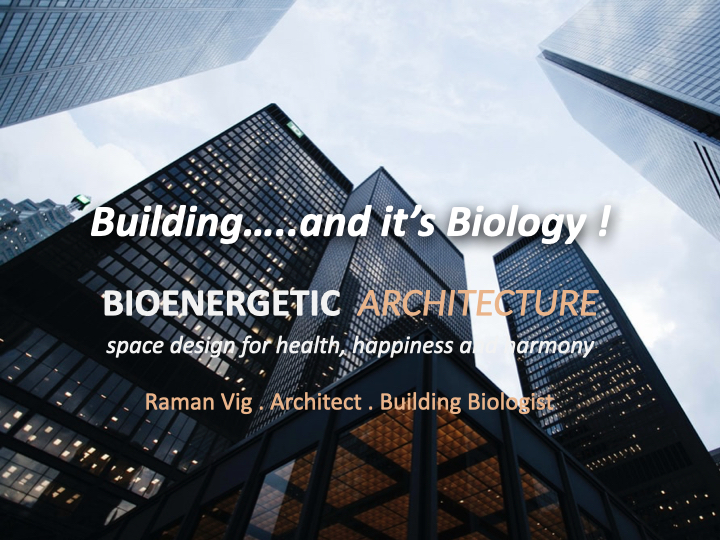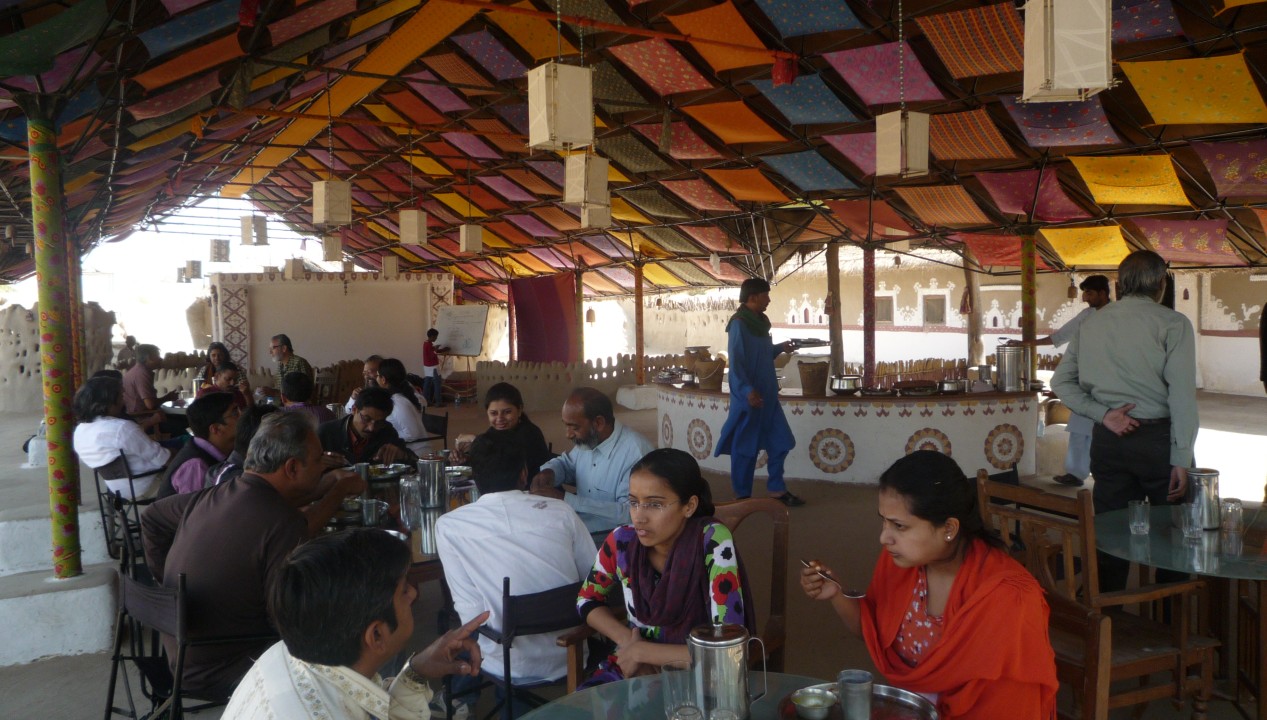When I first came across the word ‘Building Biology’, it left me a bit amused and intrigued. Over past few decades, I had never heard about it during studies or practice of architecture! Yet, little did I suspect that ‘Building biology’ will become so integral to my perception of ‘holistic space design’ that it will mark a distinct milestone of sorts in my professional journey! In this article, I hope to share my understanding of this subject and how it has potential to herald a ‘new era of design consciousness’ in our architecture. Before we delve any further in understanding ‘Building Biology’ , it will be worthwhile to examine following facts;
Fact ‐1. In words of Nikola Tesla: If you want to find the secrets of the universe, think in terms of energy, frequency, and vibration. Science tells us that there is no dead matter; atoms are made of well‐ defined quanta of energy. We all are electric beings ‐ this too has been long established scientifically. Our biological systems and their physical environment are in constant communication with each other. Even small signals have an effect—individually or together. Signals from the physical environment such as space, atmosphere, climate, soil, building materials, technical installations and so on act on atoms, cells, and the entire body, which, in turn, has an effect on the nerve system, cell communication, genetic material, control and regulatory systems, metabolism, immune system, blood formation, and circulatory system.
Fact ‐2. An average person is likely to spent over 90% of life inside artificial structures. So it matters very much what the walls, ceiling, and furnishings of this indoor living environment are made of. In past two decades, building industry invented and introduced numerous building materials, systems and technologies to either address the growing demands of time , space and economy or to achieve better performance or strength and at times even to be sustainable and save natural resources. As a result, many new materials that are alien to nature and have been artificially synthesized have become part of our life and surrounding environment. Use of natural materials like wood, stone and earth in their natural form has become less with every passing year. Human bodies, which were adapted to living in natural materials and natural air has been put into a completely synthetic environment with air conditioning! This modern way of building causes serious interference with biological systems. As a consequence, building‐related diseases and sick building syndrome are increasingly on the rise. Simply because we are unable to adapt to this fast changing ‘ artificial’ living environment.
Fact‐3. We have surrounded ourselves with unprecedented amounts of electric and magnetic fields (all the gadgets around us, computers, electrical lines etc.) , radio field radiations ( cell phone communications, television and radio broadcast, GPS etc.) and a plethora of unnatural static fields (computer, cell phone, LCD screens and interiors made of synthetic new age materials). Every time we enter a ‘ wi‐fi ‘ zone or move around in a city where our cell phone works, we immerse ourselves in an ocean of radiations. Whenever technological shift takes 2G to 3G onto 4G and finally 5G , IoT ( Internet of things)‐ this ocean of radiations becomes denser with new frequency bands of electromagnetic fields.
Historically, these fields did not exist naturally in such intensities ever on our planet. So over a long period of time, with process of evolution, human body has aligned to the natural levels of earth and cosmic radiations, magnetism and even miniscule amount of radioactivity which is naturally present in earth’s environment. Then suddenly in a very short span of time, say over past three‐ four decades, owing to a geometric rise in technical advancements, we find ourselves surrounded with environmental conditions ( especially the invisible radiations) of which human body and mind has no prior conditioning.
The subject of Building Biology seeks to strike ‘back’ the balance that we have lost with nature. It is a broad based inter‐disciplinary subject that encompasses all the sciences and knowledge branches that strive to bring back the balance between human beings and nature through architecture. Natural sciences, especially biology and behavioural sciences, geo‐biology, radiobiology, electro‐biology, psychology , physiology, material science, ecology and all aspects of economics , technology and architecture are integrated into the holistic framework of Building biology.
As architects, engineers and building trades people, we are mostly trained along technical , aesthetical, functional, sustainable and economic lines. Biological aspects are almost completely ignored. In the past, this may have worked because only natural building materials were used and adverse health effects due to buildings were negligible ( and of course all the electromagnetic and static fields were absent completely!) Numerous connections between health, illness, and living environment have already been researched and made freely available. Yet too little of this knowledge is known to the public or to educationists and policy makers. Perhaps this is why the biological impact of our built spaces and planning strategy is never ( or extremely rarely) considered in architectural design, urban planning and our everyday living. Following are just a few common environmental influences to consider:
- Impacts of Terrestrial ( geopathic) radiations on human health and immunity
- Radioactivity of commonly used materials like granites , basalts etc.
- Alternating electromagnetic fields created by electric lines in sleeping areas and their adverse impact on our health
- Static fields created by computers, LCDs etc. and the electromagnetic pollution caused by same
- Adverse impacts of wi‐fi and other electromagnetic frequencies used for mobile communication
- Uni‐polar air ionization, caused by artificial surfaces, static fields etc.
- High CO2 levels in perpetually closed (air‐conditioned) workplaces ‐ and it’s impact on productivity
- Assessment of building materials w.r.t compatibility to human well being …and moreWhile all aforementioned have immense impact on well‐being of users of a space , however, these are hardly recognised as critical ingredients of a good architectural or interior design. Building biology addresses all these and more and develops a bridge between human well being by alignment of buildings with nature. It aims to create spaces that promote and facilitate good health, happiness and harmony for all those who inhabit them. Such an intervention of a ‘holistic , humane and nature centric design approach’ promises to herald a paradigm shift in the current ‘architectural design consciousness’.
This, to my mind, is most achievable as well as an imminent need of the hour.
– Raman Vig







